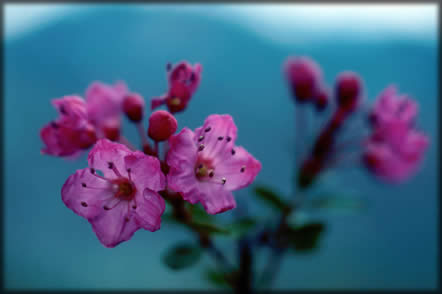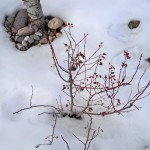After sitting and observing in my local park for several minutes, I was taken aback by the incredible number of edges that I noticed: cloud-shaped boundaries between plants, pockets of light and dark where snow gave way to dark soil beneath, trails of use and lack thereof.
The more I considered these edges the more I saw them as an illusion, just a way for my mind to categorize the place and the organisms that called this place home. There aren’t many true hard boundaries in nature, more often borders are softly blurred transitions that ebb and flow with the dynamic tension between species and habitats. Certainly the wildlife that used this space for food and corridors didn’t care about the borders that they may be crossing. Where did one plant stop and another begin? The answer seemed fairly obvious on the surface but I knew that, underground and out of sight, roots were intermingling, water rights were being divvied up across borders, and information about available nutrients was being shared. Who knew what other overtures were happening in this overlapping space?
As with all things in nature, good ideas are scalable; I know what is true for my local park is true on a larger, regional scale. In nature there are these wonderful places that represent a transition zone between ecosystems, called ecotones. The word ecotone comes from the combination of ecology and tone, from tonos (Greek for tension). In other words, a place where ecologies are in tension for available space and resources to sustain and reproduce. Ecotones are delicious places to visit because they present visitors with the comfort of the familiar: the native species from either system on the cusp, as well as the novel: organisms that make their home right in the zone of overlap and no where else (called endemics). One of the most spectacular examples of an ecotone that I have visited is the Kalmiopsis Wilderness in Oregon where amazingly disparate ecosystems meet. All within a day’s hike up from 500-5,000 feet a person can enjoy a cathedral of centuries-old Douglas Fir trees and an arid, rugged desert inhabited by cacti and succulents. In the ecotone, the place at the intersection of these two systems, you’ll find the most beautiful Kalmiopsis Shrub, the oldest member of the heather family that dates back to pre-ice age.
As I walked back from my local park I began to reflect on how ideas are shared and innovation happens in my “systems”, whether they be personal or professional. I realized that the most exciting and productive ideation sessions tend to happen when I am engaging with people with different perspectives, be they cultural, disciplinary, gender, age, etc. These “idea ecotones” are luscious habitats that create space for the comforts of home and the thrill of the unfamiliar. I am delighted that Biomimicry for Designers at MCAD is an idea ecotone with a diverse group of students that bring their perspectives and expertise from around the world and span seemingly disparate disciplines from fine art, illustration, environmental science, engineering, and design of all stripes. Who knows what ideas will grow in this habitat at the intersection?
Kalmiopsis shrub image courtesy and copyrighted to Lee Webb. Other image courtesy of Cindy Gilbert.

